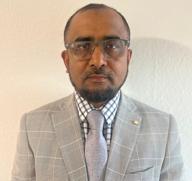
Something went Wrong
Try entering your email again or contact us at support@qfi.org
Try entering your email again or contact us at support@qfi.org
You’ll receive an email with a confirmation link soon.
Aug 19, 2025
By Dr. Mahmud Bin Sayeed
My path took me from a traditional madrasah in a non-Arabic-speaking nation (Bangladesh) to a PhD programme in Arabic language education at the University of Warwick, navigating both traditional and contemporary educational environments. During my journey, I have faced distinct pedagogical obstacles, adjusted to various learning settings, and helped teach Arabic in Bangladesh and the UK. This blog states my own experience and how it represents more general issues with teaching Arabic to non-native speakers in Bangladesh and the United Kingdom.
Arabic in the Traditional Madrasah: Revered but Restrictive
My Arabic learning began (1980s) in a Bangladeshi traditional madrasah where Arabic was loomed predominantly as a motivating tool to understand Islam and Islamic texts. The curriculum, which was organised according to the government-funded Aliah Madrasah system, placed a strong emphasis on textbooks such as Al-Nukhab al-‘Arabiyyah, Bakouratul Adab, Mirqat Al-Tarjamah, al-Adab al-‘Asri, al-Muntakhab Al-‘Arabi, al-Balagah, morphology (sarf), and classical Arabic grammar (nahw). This gave a solid foundation in grammar, but it didn't offer much in the way of modern standard Arabic’s (MSA) communicative skills.
There was hardly any practice in speaking, listening, or even writing. Instead, we committed syntax rules to memory and translated documents. The exclusive focus of the teacher-centred curriculum was on the pupils' comprehension of the Arabic texts. There was a noticeable lack of differentiated learning since instruction consistently focused on a single text and a set of standardised questions and answers, paying little consideration to the needs of different learners or their differing levels of skill. As Saeed (2010) correctly pointed out, the goal of the traditional system was to learn Arabic as a code to access sacred texts and classical knowledge, rather than as a language of communication. Arabic felt distant because of this distance between theory and practices; it was regarded as intellectually superior yet linguistically unapproachable.
University Arabic Curricula: Broadened Content, Limited Pedagogical Reform
Even though the University of Dhaka's curriculum expanded to incorporate both classical and modern Arabic literature, the majority of instruction continued to be based on traditional grammar-translation techniques. The majority of instructors had little experience with modern language methods of teaching because they were mainly trained in Arabic literary studies rather than second-language pedagogy. Students read a variety of literature, including contemporary writing and pre-Islamic poetry, but the instruction provided limited opportunity for real-world conversation. Arabic instruction in Dhaka university and many other universities in Bangladesh is still dominated by outdated teaching paradigms, many of which are derived from colonial-era language education frameworks, and these models do not meet the communicative needs of today's students. Although the academic environment improved my understanding of Arabic literature, it did not adequately equip me for real-world communication in Arabic.
Teaching Arabic in Bangladesh and the UK: A Paradigm Shift
An important turning point in my academic and professional development was my choice to become an Arabic language teacher. When I first began teaching at the Islamic University of Bangladesh in 2002 and then at the University of Dhaka from 2004 to 2006, I came across students who were really interested in learning Arabic. Nevertheless, in spite of this zeal, the curriculum was still mostly text-based and placed little focus on learner-centred pedagogy or communication skills. The discrepancy between curriculum design and learner motivation highlighted the need for more dynamic and purpose-driven methods of teaching Arabic to non-native speakers. This discrepancy motivated me to go for number of new ideas such as a) dialogue-based activities, b) vocabulary growth, and c) frequently self-made communicative Arabic. None of these universities have offered much teaching in Modern Standard Arabic (MSA), with most of the courses concentrating on Arabic literature from all eras.
Since 2006, my experience teaching Arabic in the UK has brought with it a number of new pedagogical challenges that mostly caused by the diverse ethnic communities with many different motivations linked to academic, professional, and religious goals. As a result, I had to modify my teaching strategies to accommodate a wide range of needs and expectations.
As a result, I was forced to completely re-evaluate my teaching strategies and started using resources like: a) spoken dialect components, b) real Arabic media, and c) cultural content to improve linguistic relevance and encourage learner interaction in more significant and contextually rich ways. From delivering static knowledge to engaging students in dynamic classroom activities, my teaching style changed from being textbook-driven to learner-centred. Through participating in INSETs (In-Service Education and Training) and my observation of my colleagues' lessons in the UK, I became more conscious of the substantial pedagogical change from the methods I experienced applied in Bangladesh. It guided me to emphasis on learner-centred teaching approaches, differentiative learning, formative evaluation, and feedback, and communication. In addition to emphasising the need for reflective practice and adaptive teaching, these professional development opportunities led me to assess and adapt my own teaching strategies in order to accommodate the numerous needs of students in multicultural, non-native environments.
PhD at Warwick: Understanding the Why Behind the How
Inspired by the aforesaid complex issues, I pursued a PhD project in Arabic Education at the University of Warwick (2018-2023). This multiple case study (MCS) examines how Arabic is taught in three independent Muslim secondary schools (IMSS) in the UK. It examines six aspects: Arabic teachers’ educational background; students’ and teachers’ motivation; resources; pedagogical practice; assessment; and challenges faced by Arabic language teachers and pupils of the case schools in terms of learning and teaching Arabic. Data were gathered and analysed using the qualitative method, which included semi-structured interviews with teachers, focus group discussions with pupils, document analysis and classroom observations.
Findings indicate that teachers’ educational backgrounds and subject knowledge shape their pedagogical practices and also highlight the challenges faced by teachers and pupils of these schools. The research also clarifies the distinction between Quranic Arabic and the teaching of the modern standard Arabic as a curriculum subject. This study identifies various motivating factors for teaching and learning. In addition, the research suggests that the available provision does not fully meet pupils’ desires to learn Arabic. Policy implications of this study for schools’ headteachers, heads of Arabic, and policymakers include the crucial need for funds, appropriate resources, and Arabic teachers’ in-service specialised training. Lack of the number of qualified teachers and lack of contact class hours for all cases are identified as significant challenges. Lack of appropriate resources and materials is considered a general challenge for Arabic as a modern foreign language (MFL). Limitations of the study, personal reflections, and potential for future research are also identified.
Disclaimer: The views and opinions expressed in this blog are those of the author and do not necessarily reflect the views of Qatar Foundation International (QFI). While QFI reviews guest contributions for clarity and to ensure the content is valuable for our audience, the accuracy and completeness of the information are the responsibility of the author.
Submit Your Own Blog!
We invite educators, researchers, and professionals in Arabic education to share their insights with our global community. Whether you teach, conduct research, or support Arabic language learning, your voice can spark innovation, drive change, and deepen understanding in the field of Arabic education.
Dr. Mahmud Bin Sayeed is a researcher and academic with a focus on teaching Arabic. He is a skilled instructor with over 20 seminars on curriculum building and Arabic teaching techniques. Through professional training and research, he advances efficient pedagogical practices in Arabic instruction.



